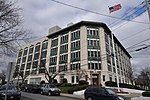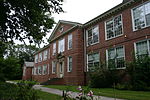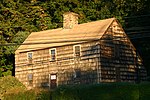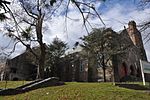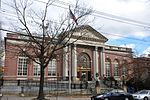Byram, Connecticut
Census-designated places in ConnecticutCensus-designated places in Fairfield County, ConnecticutConnecticut geography stubsGreenwich, ConnecticutNeighborhoods in Connecticut ... and 1 more
Use mdy dates from July 2023

Byram is a neighborhood/section and census-designated place (CDP) in the town of Greenwich in Fairfield County, Connecticut, United States. It had a population of 4,146 at the 2010 census, and a census-estimated population of 4,216 in 2018. An endcap of Connecticut's Gold Coast, Byram is the southernmost point in the town of Greenwich and the U.S. state of Connecticut. It is separated from Port Chester, Westchester County, New York, by the Byram River. Byram was once known as East Port Chester.
Excerpt from the Wikipedia article Byram, Connecticut (License: CC BY-SA 3.0, Authors, Images).Byram, Connecticut
Chestnut Street,
Geographical coordinates (GPS) Address Nearby Places Show on map
Geographical coordinates (GPS)
| Latitude | Longitude |
|---|---|
| N 41.004166666667 ° | E -73.653611111111 ° |
Address
Chestnut Street 21
06830
Connecticut, United States
Open on Google Maps

